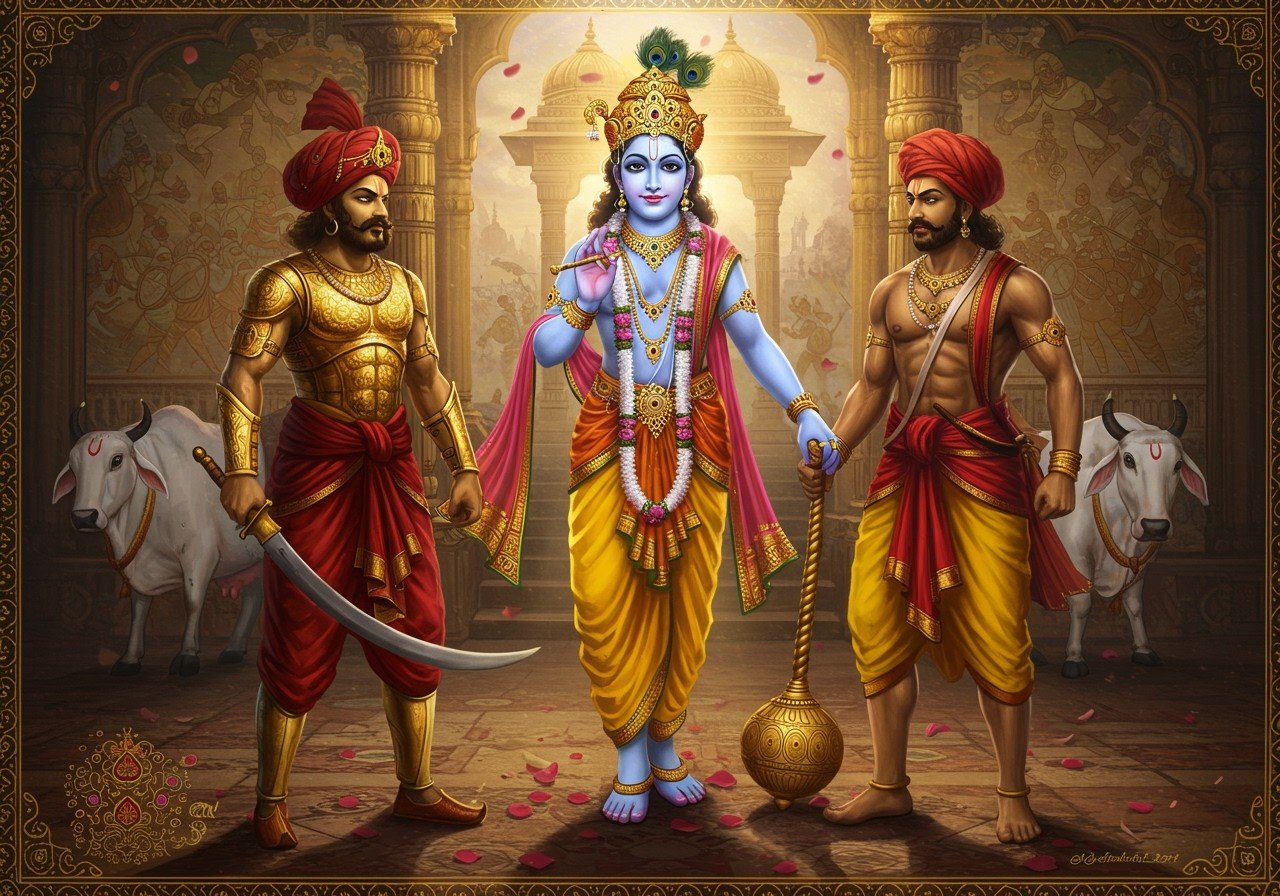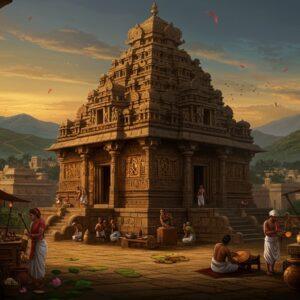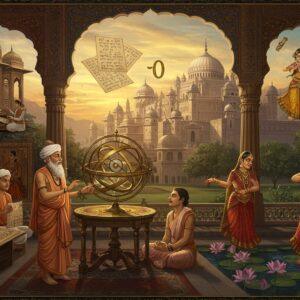
Exploring their historical and cultural dimensions. In the rich tapestry of India’s social structure, the relationship between the Kshatriya and Yadav communities stands out with its complexity. Both castes possess unique historical narratives and cultural practices. Kshatriyas, known as warriors and rulers, hold esteemed positions in epic tales such as the Mahabharata and Ramayana. Yadavs, traditionally linked to pastoral life, find a deep connection with Lord Krishna, a central figure in Hindu mythology, often described as a Yadav descending from the Yadu dynasty. These intertwined narratives create a fascinating interplay of history, mythology, and tradition.
Historical Context and Claims of Kshatriya Status
The Yadavs assert their lineage from Yadu, a revered king mentioned in ancient scriptures, associating them with the Chandravanshi Kshatriya lineage. Lord Krishna’s association with the Yadu dynasty further strengthens this connection. Throughout history, various Yadav communities have demonstrated prowess as rulers and warriors. Notable ruling families, such as the Seuna Yadavas of Devagiri, the Wodeyars of Mysore, and the Holkars of Indore, serve as testaments to their influence and power.
Ancient texts like the Rigveda, Mahabharata, and Puranas mention Yadavs, solidifying their historical presence. A significant turning point in their history is marked by their shift of capital from Mathura to Dwaraka, believed to be a consequence of attacks by Jarasandh of Magadha, seeking vengeance for Kansa’s death.
Caste System and Social Status
The varna system traditionally positioned Kshatriyas as the warrior and ruling class. However, the perception of Yadavs within this system is varied. Some consider them Kshatriyas, while others place them within the Shudra varna. In contemporary India, many Yadavs are classified under the Other Backward Classes (OBC) category due to socio-economic factors. Efforts to elevate their social standing through claims of Kshatriya lineage underscore the ongoing complexities of social mobility.
Diverse Subdivisions within the Yadav Community
The Yadav community is a diverse tapestry, encompassing various allied castes and groups. These include the Ahirs (also known as Abhira), the Konars predominantly found in Tamil Nadu and Kerala, and the Dhangars in Maharashtra and Karnataka. This rich diversity contributes to the multifaceted cultural landscape of the community. For a deeper understanding of these subdivisions, we encourage you to explore more on this topic.
Points of Contention and Ongoing Debates
The question of lineage continues to be a point of contention. Some assert that the Jadauns/Jadon Rajputs/Kshatriyas are the true descendants of Lord Krishna, posing a challenge to claims made by Yadavs/Ahirs. Furthermore, the traditional association of many Yadav communities with pastoral occupations has, according to some, influenced their perceived ritual status. This adds another layer to the intricate relationship between caste, occupation, and social standing.
Cultural Exchanges and Political Influence
Festivals and rituals often serve as platforms for cultural exchange between Kshatriyas and Yadavs. Inter-caste marriages further contribute to the complex social dynamics between the communities. In the political sphere, both groups wield considerable influence, particularly in states like Uttar Pradesh and Bihar, where they play significant roles in regional governance. Their political engagement reflects their evolving roles in modern Indian society.
Poojn.in: Supporting Your Spiritual Journey
At Poojn.in, we deeply understand the significance of spiritual traditions for both Kshatriya and Yadav communities. We offer a wide range of authentic puja items, carefully sourced and crafted to honor these traditions.
For Kshatriya Traditions:
- Pure copper and brass items for daily worship: Enhance your daily puja rituals with our exquisite collection of copper and brass items, crafted with utmost care and reverence. Browse our collection now.
- Traditional weapons (shastra) for Ayudha Puja: Honor the warrior spirit with our authentic shastra for Ayudha Puja, ensuring a respectful and traditional observance. Find the perfect items to make your Ayudha Puja truly special.
- Special items for Kshatriya-specific ceremonies: Discover unique items tailored for specific Kshatriya ceremonies, carefully curated to uphold the sanctity and tradition of your rituals. We offer a wide variety to meet diverse ceremonial needs.
For Yadav Community Rituals:
- Complete Krishna puja sets: Immerse yourself in devotion with our complete Krishna puja sets. Each set includes everything you need for a fulfilling and authentic Krishna puja experience. Find Your Perfect Set Here.
- Pure silver and brass items for Go-puja (Cow Worship): Celebrate the sacred cow with our pure silver and brass items, adding a touch of reverence to your Go-puja rituals. Our collection includes a variety of items to suit your specific needs.
- Traditional items for Govardhan puja: Observe Govardhan puja with authenticity using our traditional items, meticulously crafted to honor the tradition. Explore our Govardhan Puja essentials.
We are committed to providing authenticity and convenience. Our products are sourced directly from trusted manufacturers and delivered to your doorstep with secure packaging, ensuring the sanctity of your sacred items. Explore our complete collection at Poojn.in.
Need guidance for specific ritual items? Connect with us:
Phone: 03369029784
WhatsApp: 9476142738
Note: Product availability may vary. Please check the website for current stock and prices.
Explore More: Delve deeper into the cultural richness of India with our other blog posts:
- Burha Madhab Than: Rituals and Offerings for Spiritual Connection
- Burha Madhab Than: Festivals and Celebrations Explained
- Mukteshwar Mahadev: A Spiritual Journey – Rituals, Offerings, and Divine Connection
Conclusion: Embracing Shared Heritage and Future Possibilities
The intricate relationship between the Kshatriya and Yadav communities reflects a shared passage through history, shaped by traditions and evolving social dynamics. Both communities have indelibly marked India’s cultural heritage, their narratives woven into the fabric of epic tales and historical events. The intertwining claims of lineage and the vibrant cultural exchanges between them highlight their profound interconnectedness, shaping their identities in unique ways.
As India continues its journey of progress, fostering understanding and respect for these complex relationships becomes paramount. Embracing the shared heritage of these communities creates a space for mutual respect and appreciation. Online platforms like Poojn.in offer a convenient and accessible way to explore authentic ritual items, allowing individuals to honor their traditions while adapting to the needs of modern life.
The evolving social dynamics within India present opportunities for growth and collaboration. By acknowledging the past and working together, Kshatriyas and Yadavs can contribute to building a future grounded in unity and respect. This collaborative spirit can enrich not only their communities but also the broader social fabric of the nation.
FAQs on Kshatriya and Yadav: Exploring the Relationship
What is the historical background of the Kshatriya caste? The Kshatriya caste, traditionally recognized as warriors and rulers, played a crucial role in ancient Indian society. Tasked with the protection of kingdoms and upholding justice, their history is replete with stories of valor and leadership. They feature prominently in ancient texts and continue to hold a significant place in cultural memory.
Who are the Yadavs in Indian society? The Yadavs, traditionally associated with pastoral life and agriculture, represent a significant community in India. Their connection to Lord Krishna, a revered figure in Hindu mythology, forms a cornerstone of their identity. Spread across various regions of India, they have played diverse roles throughout history.
Are Yadavs considered part of the Kshatriya caste? The connection between Yadavs and Kshatriyas is a complex one. While some Yadavs identify as Kshatriyas based on historical narratives and shared traditions, others view themselves as a distinct group with a unique cultural heritage. This question of identity reflects the intricate social dynamics within India’s caste system.
What is the significance of Kshatriya and Yadav communities in modern India? In contemporary India, both Kshatriya and Yadav communities play significant roles in political and social spheres. Actively involved in various social movements, they work towards preserving their cultural traditions while advocating for their rights and representation. Their engagement in modern India reflects their evolving roles and aspirations.
How do Kshatriyas and Yadavs maintain their cultural traditions? Both communities actively maintain their cultural traditions through a vibrant tapestry of festivals, rituals, and ceremonies. These shared practices, passed down through generations, not only celebrate their unique identities but also strengthen their social bonds. They serve as a testament to the enduring power of tradition in modern life.
Why do some Yadavs identify as Kshatriyas? Some Yadavs identify as Kshatriyas due to historical claims of descent from Lord Krishna, who is often described as a Kshatriya within certain narratives. This identification can also be interpreted as a pursuit of social status and recognition within the traditional caste hierarchy, reflecting the complexities of social mobility and identity.
What role do Kshatriyas and Yadavs play in Indian festivals? Both communities actively participate in various Indian festivals, enriching the cultural landscape of the nation. These festivals often serve as a platform to celebrate their shared history and cultural values, fostering a sense of unity and belonging. Their participation adds to the vibrancy and diversity of these celebrations.
How do social dynamics between Kshatriya and Yadav communities affect their relationship? The social dynamics between these two communities are influenced by historical ties, cultural practices, and political factors. These intersecting influences shape their interactions and collaborations within Indian society, sometimes fostering cooperation and other times leading to competition. Understanding these dynamics is key to appreciating the complexities of their relationship.


